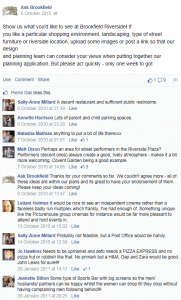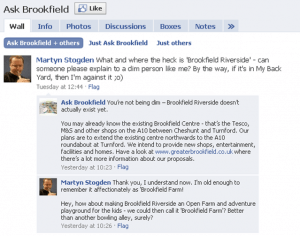The internet and social media are changing the way we communicate at every level, both personally and professionally. This increased significantly in 2004 when Web 2.0 changed enabled substantially more effective two-way communication. Facebook was also established in the UK in 2004 and Twitter followed in 2006.
Just look at the figures – today 58m individuals in the UK use the internet regularly and this is increasing by 1.5m each year. Additionally, over 60% owns a smart-phone or tablet.
Development planning has seen a massive shift towards online consultation. In 2005 the Government required that local authorities and other public bodies ‘e-enable’ all services including planning, public engagement and consultation. As local authorities are now obliged to post all planning applications online, local residents can view planning application online. And as community groups and activists discuss and debate development proposals on Facebook, Twitter and in blogs, the local media can quickly gather residents’ views to inform online news stories, which then results in a further sequence of online engagement. Because of this, it is vital that every potential new development has an online presence.
Consultation and social media
In 2010, I used social media in a public consultation for Brookfield Riverside, a retail scheme in Hertfordshire. The client, Bayfordbury Estates, was keen to engage with young residents and I selected social media as an appropriate way of doing so.
A dedicated community website provided an overview of the proposals; the proposed effects of the regeneration, the masterplan, artists impressions, a Q&A section and information on the consultation process. The website contained a comments box for visitors to submit feedback, links to social media and details of the information phone line. The Facebook and Twitter pages were live throughout the consultation period, providing a forum for consultees to interact with the consultation team. The team regularly posted updates on the consultation and responded to comments as necessary.
The website attracted 1,029 visits during the consultation process and 31 questionnaires were completed online. The Facebook page received over 1,900 viewings and 264 individuals gave their support to the page by becoming a “fan”. The average age of the Facebook users was 35 – 44 and 63% of respondents were female. The Twitter feed attracted 106 followers and prompted some lively discussion. Overall, 64% respondents were broadly in favour of the proposals and over 73% of survey respondents supported improved shopping facilities for the Borough.
Following the success of Brookfield Riverside, I have continued to run online consultations for retail and residential developers. Examples can be viewed here:
- Essential Living Langley Court – Facebook and Twitter
- Essential Living Archway Tower – Facebook and Twitter
- Essential Living Berkshire House – Facebook and Twitter
- Next Handforth Dean – Facebook and Twitter
- Next Longwater – Facebook and Twitter
- Next Maidstone – Facebook and Twitter
My next blog post will look at how I’ve taken the idea of using social media in consultation and created something which addresses all the benefits but is more effective, cheaper and more suited to consultation.
Please look out for the next post. In the meantime, any comments are very welcome!


